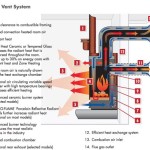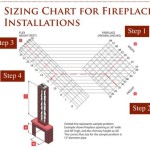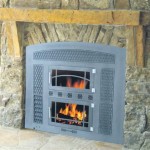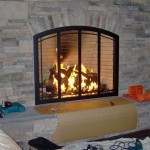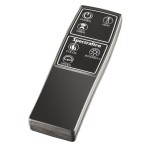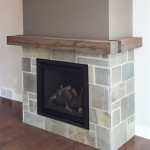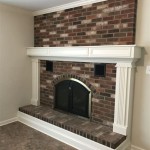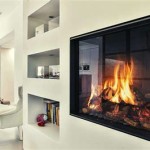Fireplace Inserts: Wood Burning High Efficiency
Fireplace inserts represent a significant upgrade over traditional open fireplaces, particularly for homeowners seeking improved heating efficiency and reduced emissions. These self-contained units are designed to fit within an existing fireplace opening, transforming it from a potentially drafty and inefficient source of heat loss into a powerful and effective heating appliance. Wood-burning high-efficiency fireplace inserts provide a compelling alternative to gas or electric options, offering the ambiance of a real fire while maximizing heat output and minimizing environmental impact.
The primary function of a wood-burning fireplace insert is to convert wood fuel into usable heat more effectively than a conventional fireplace. Older fireplaces often lose a substantial portion of the heat generated through the chimney, essentially drawing warm air out of the house. High-efficiency inserts address this issue through a combination of design features and advanced combustion technology.
Understanding Efficiency Ratings
The efficiency of a wood-burning fireplace insert is a crucial factor to consider during the selection process. Efficiency ratings, typically expressed as a percentage, indicate the amount of heat produced from the fuel that is transferred into the room. A higher efficiency rating signifies less heat lost up the chimney and more heat available to warm the home.
Several standards and testing protocols exist to determine efficiency ratings for wood-burning appliances. In the United States, the Environmental Protection Agency (EPA) plays a significant role in regulating emissions and promoting cleaner burning technologies. EPA-certified wood-burning inserts must meet specific emission standards and often boast higher efficiency ratings compared to older, non-certified models. Homeowners should seek out EPA-certified inserts to ensure compliance with environmental regulations and to maximize heating performance.
Two main types of efficiency are commonly discussed: overall efficiency and thermal efficiency. Overall efficiency takes into account all energy inputs and outputs, including the energy required to operate fans or blowers. Thermal efficiency, on the other hand, focuses solely on the heat produced from the combustion of wood. When comparing different models, it's important to understand which type of efficiency is being presented and ensure a consistent basis for comparison.
Factors that influence efficiency include the design of the firebox, the air intake system, and the presence of features like secondary combustion chambers. Proper installation and operation are also critical to achieving the stated efficiency of the insert. Using seasoned wood, maintaining adequate airflow, and following the manufacturer's instructions are essential for optimal performance.
Key Design Features for High Efficiency
Several design features contribute to the high efficiency of modern wood-burning fireplace inserts. These features are intended to optimize combustion, maximize heat transfer, and minimize heat loss.
Airtight construction is paramount for controlling the combustion process and preventing uncontrolled drafts. Unlike open fireplaces that rely on unrestricted airflow, airtight inserts allow homeowners to regulate the air supply, resulting in a more complete and efficient burn. This controlled combustion also reduces the production of smoke and emissions.
Secondary combustion systems are a common feature in high-efficiency inserts. These systems introduce preheated air into the firebox to burn off gases and particulate matter that would otherwise escape up the chimney as smoke. This secondary combustion process not only reduces emissions but also extracts additional heat from the fuel, further increasing efficiency.
Firebox design plays a crucial role in heat transfer. Inserts with larger fireboxes can accommodate more wood, allowing for longer burn times and a more consistent heat output. The shape and materials used in the firebox also influence how effectively heat is radiated into the room. Cast iron and steel are common materials used in firebox construction due to their durability and heat-conducting properties.
Baffles are internal components that redirect exhaust gases within the firebox. By forcing the gases to travel a longer and more circuitous path, baffles increase heat transfer to the surrounding air or water (in the case of water-heating inserts). This extended contact time allows more heat to be extracted from the exhaust before it exits the chimney.
Many high-efficiency inserts incorporate blowers or fans to circulate warm air into the room. These blowers force air through a series of channels surrounding the firebox, heating the air and then distributing it throughout the living space. This forced-air circulation significantly improves heat distribution compared to relying solely on radiant heat.
Selecting the Right Insert for Your Needs
Choosing the appropriate wood-burning fireplace insert involves considering several factors, including the size of the area to be heated, the existing fireplace opening, and individual heating preferences. Careful evaluation of these factors will ensure optimal performance and satisfaction.
Determining the heating capacity required is a crucial first step. Fireplace inserts are typically rated in terms of British Thermal Units (BTUs), which indicate the amount of heat the insert can generate per hour. The appropriate BTU rating depends on the size of the room or area to be heated, the insulation levels in the home, and the climate. Consulting with a qualified professional can help homeowners determine the ideal BTU rating for their specific needs.
The dimensions of the existing fireplace opening are critical for ensuring a proper fit. Inserts are available in a variety of sizes and shapes, so it's important to accurately measure the height, width, and depth of the fireplace opening before making a selection. Some inserts may require minor modifications to the fireplace opening to ensure a secure and airtight installation. Clearance requirements, specifying the minimum distance between the insert and combustible materials, must also be carefully observed.
Consider the types of wood available and the ease of obtaining it. Different types of wood have varying heat values and burn characteristics. Hardwoods, such as oak and maple, typically produce more heat and burn longer than softwoods, such as pine and fir. However, hardwoods can also be more difficult to ignite and may require more seasoning time. Choosing an insert that is compatible with locally available wood species will ensure a readily available fuel source.
Evaluate the features and options offered by different manufacturers. Some inserts come with features such as automatic air control, which automatically adjusts the air supply to optimize combustion. Others may offer thermostat control, allowing homeowners to set a desired room temperature and automatically adjust the heat output of the insert. Consider the convenience and functionality of these features when making a decision.
Finally, consider the long-term cost of ownership, including fuel costs, maintenance requirements, and the lifespan of the insert. While high-efficiency inserts may have a higher initial cost compared to traditional fireplaces, they can offer significant savings on heating bills over time due to their improved efficiency. Regular maintenance, such as chimney cleaning and inspection, is essential for ensuring the safe and efficient operation of the insert.
Proper installation is paramount to ensure the safety and efficiency of the wood-burning fireplace insert. It is strongly recommended that installation be performed by a qualified professional who is familiar with local building codes and safety regulations. Improper installation can lead to safety hazards, such as carbon monoxide leaks or chimney fires, and can also void the manufacturer's warranty.
Selecting and installing a high-efficiency wood-burning fireplace insert is a significant home improvement project that can provide substantial benefits in terms of heating efficiency, reduced emissions, and enhanced ambiance. By carefully considering the factors outlined above and consulting with qualified professionals, homeowners can choose an insert that meets their specific needs and provides years of reliable and efficient heating.

Wood Burning Fireplace Inserts Insert Installation

The Best Wood Burning Fireplace Inserts Or Stoves Ecohome

Regency Hampton Hi500 Wood Insert Fireplace S Hearth Home

Hi500 Hybrid Catalytic Cast Iron Wood Burning Insert By Regency

Why A Wood Burning Fireplace Insert Bethesda Md Service

Our S High Efficiency Fireplaces Valcourt

Fireplace Inserts 5 Money Saving Benefits Efficient Heating

T25i Timberwolf Wood Fireplace Insert Hearth Stove Patio

Large Flush Wood Arched Nexgen Fyre Made In America Fireplace Xtrordinair

Quadra Fire 5100i Wood Burning Fireplace Insert Fine S Gas
Related Posts

